It may well be that the future of the merchant fleet lies with sailboats. That's just their design will be completely different from the one that was used in past centuries.
The vast majority of modern sailboats carry slanting Bermuda rigging. Easy to operate and with excellent traction characteristics, it managed to displace the direct sailing rig, which had been used for centuries, since the time of Ancient Egypt.
Historically sails were made of cloth, sometimes leather, Chinese junks sailed under bamboo sails. The development of science has led to the emergence of more practical and reliable sails made of synthetic fabrics. But progress does not stand still, and engineers sometimes offer very interesting designs designed to replace the traditional approach. I would like to talk about some of the most unusual projects in this material.
What are unusual sails for?
When it comes to unusual sails, the first thing that comes to mind is Superyacht Maltese Falcon. But for this ship, it is not so much the sails themselves that are unusual as the masts that carry them. And I would like to tell you about unusual sails, for the manufacture of which fabric is not always used.
It would seem, why do you need to reinvent the sail? In the merchant marine, sailboats were supplanted more than a century ago by steamships, which do not look as romantic as clippers running on the waves, but are much less dependent on the vagaries of the weather and easier to manage. It would seem that sail today is the lot of small and large yachts created for pleasures that no diesel engine is able to give. But engineers developing new sail designs are primarily looking for economic benefits.
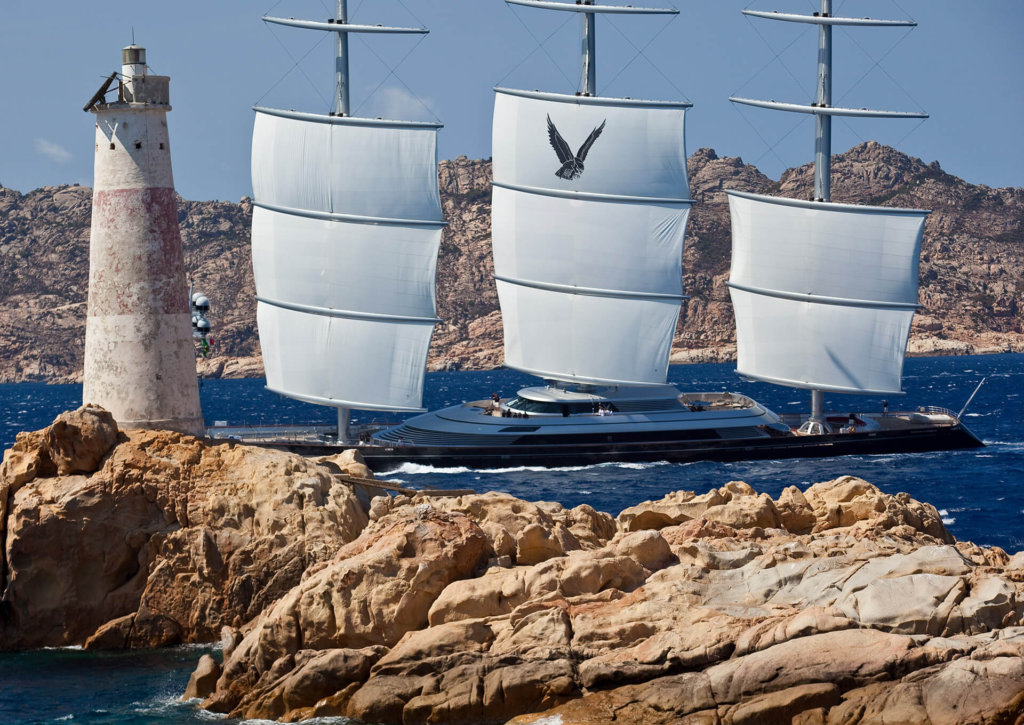
The idea is that if you equip a cargo ship with additional sailing equipment, this will reduce the cost of its operation, by reducing the level of fuel consumption. Indeed, why burn fuel that costs money when you can use the free power of the wind, even if only occasionally? And environmental issues are getting more and more acute.
Early steamships were also necessarily equipped with masts with direct and oblique armament, but time has shown the failure of such "hybrids". And as soon as sufficiently reliable engines appeared, sails were happily abandoned. Masts make the whole structure heavier, interfere with the development of deck superstructures and holds, and require a specially trained crew. It is hard to imagine what a modern container ship would look like if it were equipped with masts with sails. It would be a strange design.
In other words, it is impossible to put "classic" sailing equipment, even if auxiliary, on a modern dry cargo ship or tanker. The use of the DynaRig system used on the Maltese Falcon is unjustified due to its complexity and high cost.
It is required to create something inexpensive and not too "fancy". We note right away that no one has yet been able to cope with this task. There are very interesting projects and developments, but they are all rather prototypes, the future of which is not yet clear.
Rotor instead of a sail
Interestingly, the DynaRig sailing equipment used on the Maltese Falcon was originally intended specifically for large-tonnage cargo ships. The design was developed by engineer Wilhelm Prelss in the 60s of the last century. The inventor patented his creation and even founded a company that was supposed to build DynaRig for bulk carriers. But the novelty was treated with doubt, and the technologies of those years simply did not allow creating a truly practical, reliable and convenient design. Needless to say, modern superyachts with such weapons are simply crammed with special computer-controlled electronics.
There have been other attempts as well. So, many who watched the exciting footage of the famous explorer Jacques-Yves Cousteau are familiar with the Alsion ship (we also know it as the Alcyone), which features two turbosails. The driving force is created due to the difference in the speed of the wind flow from different sides of the structure, which creates a vortex motion around itself. As a result, a vacuum is formed on one side of the sail and it begins to work like a wing.
For the first time, a turbosail was used back in 1924 by the German inventor Anton Fletner, who converted the three-masted schooner Bukau into a rotary vessel with two "sails" 13 meters high. The experiment was successful, no particular shortcomings were revealed. To create the necessary turbulence, rotor sails in the form of ordinary cylinders were rotated by electric motors, the ship could move even at an angle of 25 degrees to the headwind, which is impossible in the case of classic sailboats. The former schooner crossed the Atlantic Ocean without any problems, proving the suitability of such a mover.
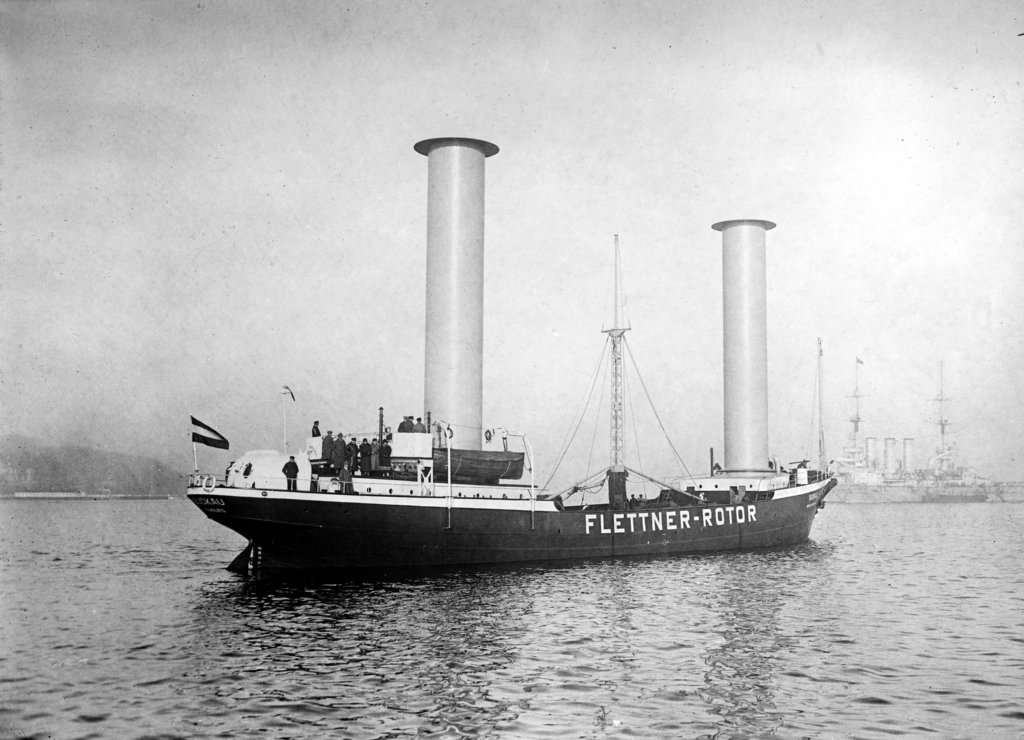
The result of the success of Bukau was the construction of the rotary dry cargo ship Barbara, already equipped with 3 17-meter cylinders. But then the Great Depression began, followed by the global crisis and there was no time for experiments. As a result, "Barbara" was converted into a conventional bulk carrier with propellers. The turbosail was forgotten for decades.
Once again, this project was revived by the Cousteau team, who wanted to build a ship capable of using the free power of the wind along with conventional diesels, but without being a classic sailboat. As a result, Alsion was launched in 1985. The creators of the unique ship finalized the ideas of Flettner, and the turbosail (of a much more complex design than on the Bukau) was already used as an additional, rather than the main propulsion. The vessel turned out to be very successful, and the use of rotors allowed the 35% to reduce fuel consumption.
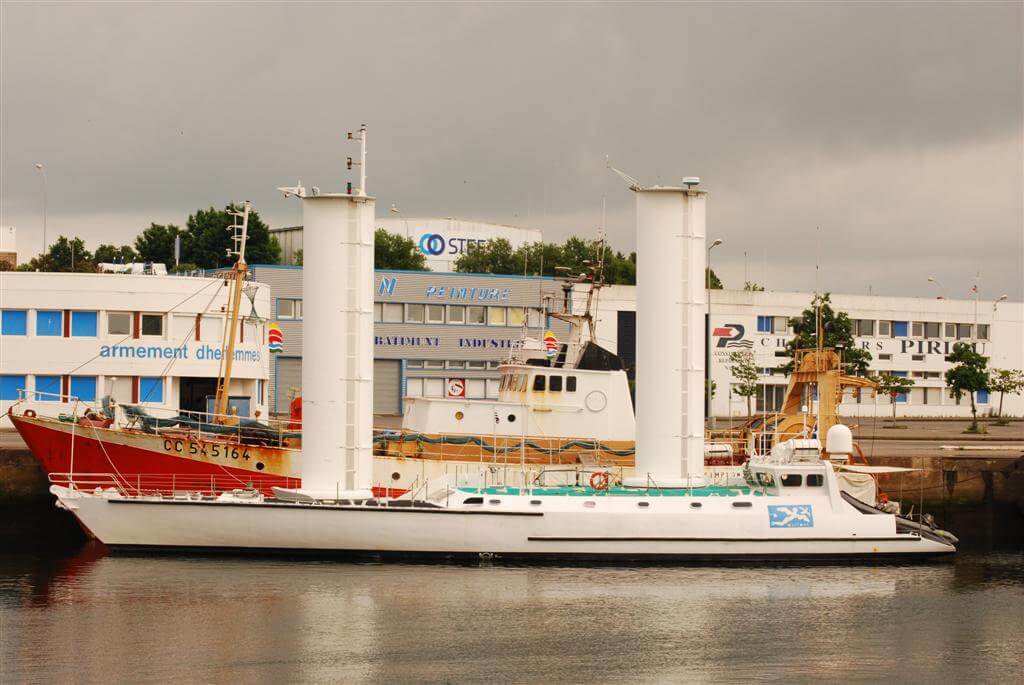
Inspired by the success, the researchers began building an even more advanced vessel with turbosails, which was to be called the Calypso II. But in 1997, Cousteau died and the project was stopped. Its future is in serious doubt.
But this time, the technology was not forgotten, and in 2008 in Germany, the E-Ship 1 “truck” was launched, 130 meters long, equipped with 4 turbo sails at once, similar in design to those that Fletner once used. The use of wind power allows the ship to save up to 1.2-1.7 MW of power, according to Enercon, which built it.
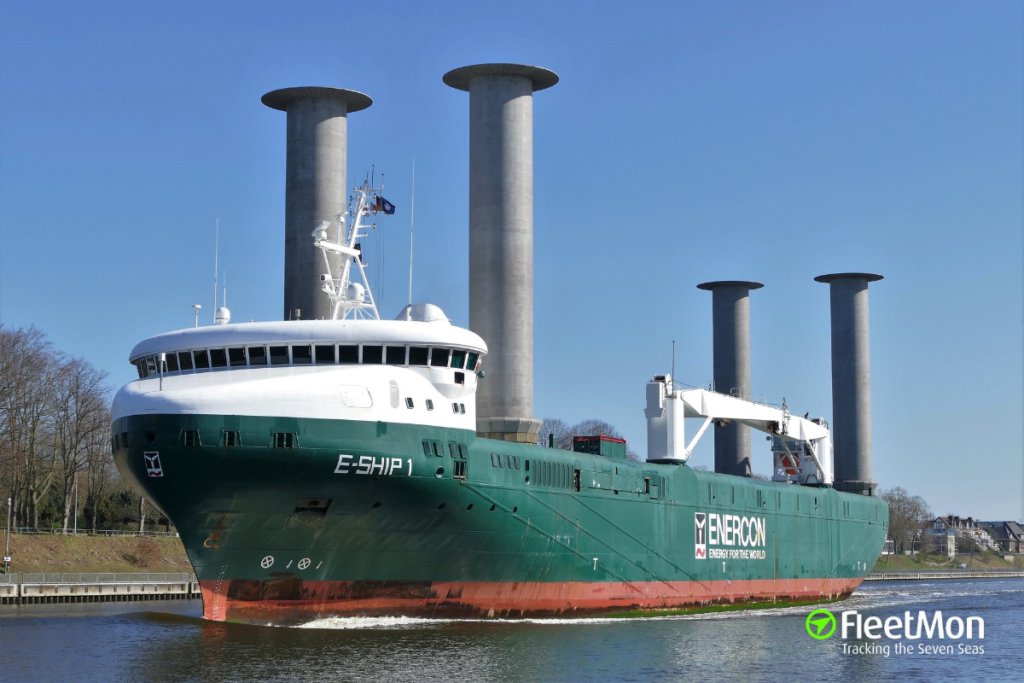
The world's largest maritime shipping company Maersk Pelican, which equipped a tanker with two such sails, is also testing this direction. The enterprise turned out to be successful and the company announced its intention to continue work in this direction. There is no doubt that others will follow her example.
Wing sails
The idea to use a vertically set rigid wing as a sail is also not new and also appeared at the very beginning of the 20th century, when aviation was just beginning to develop. However, for a long time the idea of a sail-wing remained unrealized, the first ships began to appear only in the 40s, and all these were small experimental yachts. Then, starting in the 60s, experiments with such a propulsion unit became commonplace in the world of sports and even cruising yachts.
Perhaps the most famous use of a wing sail is the USA-17 (aka BOR90) trimaran built by BMW Oracle Racing for the 33rd America's Cup. Instead of the traditional mainsail, a rigid wing of two independent sections made of carbon fiber was installed. The yacht showed excellent results, beating Alinghi 5 with a score of 2:0. Moreover, in some cases, USA-17 went only under one wing, removing the staysail, while its competitor constantly used both sails.
There are also projects of cargo ships using such sails as the main mover. But if earlier it was only more of an engineering dream, then the emergence of new technologies made it possible to begin to put them into practice. For example, a Swedish consortium of a number of companies and organizations presented the project wind Powered Car Carrier or wPCC for short. This is a 220-meter "truck", created specifically for the transfer of cars - up to 7000 for one trip. And while it still has diesel engines for improved safety and maneuvering in tight spaces, the 90% is expected to navigate its way with wind power.
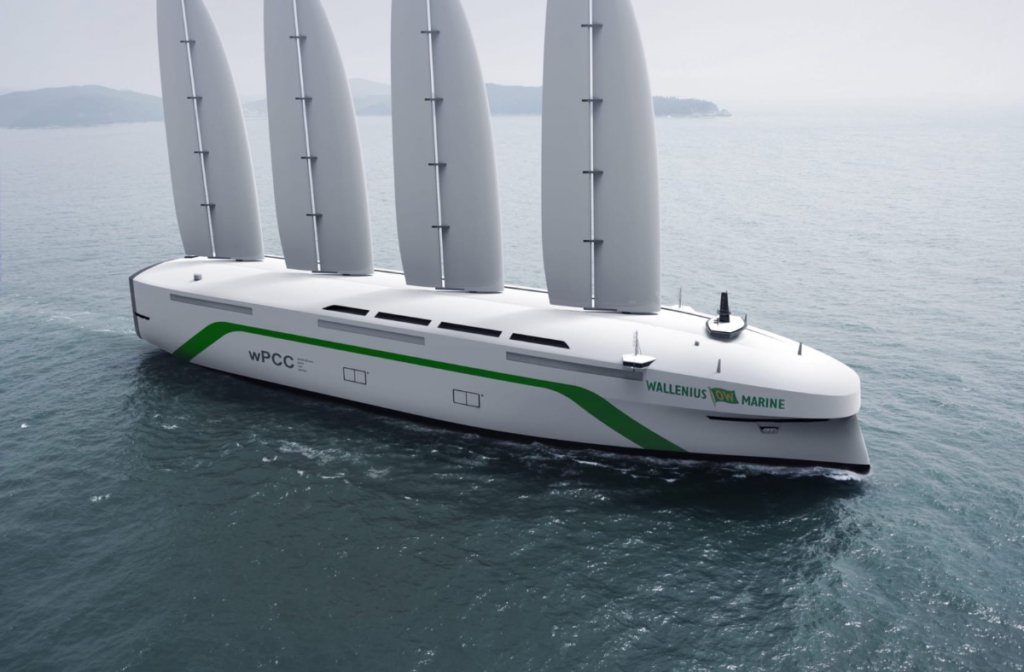
Naturally, this will require more time compared to a diesel vessel - about 2 weeks instead of the usual one. But wPCC will not carry perishable goods. The world's first sailing car carrier is expected to be launched in mid-2022. And if the experiment is successful, then we can expect the appearance of many similar ships in the future.
Kite
This type of propeller is more interesting than the rotors and wings described above in that, in theory, it can be used on almost any modern ship, without the need to make complex changes to the design. You don't need any masts, just create a big kite and attach it to the bow. It is for this reason that kite sails look the most promising in terms of mass use in the foreseeable future.
And this idea is also not new, the first experiments with kite sails were carried out at the beginning of the 20th century. But the outbreak of world wars did not allow any serious development of this direction. Subsequently, it was repeatedly returned to, but everything actually came down to bold and unusual ideas and patents. Eventually kite sails used only on small boats.
A truly large-scale work in this direction was taken up by the German company SkySails GmbH & Co, founded in 2001 and engaged in the creation of kites for use as sails. The design being developed consists, in fact, of the kite itself, with an area of several hundred square meters, and a special and rather complex electronic system that controls it.
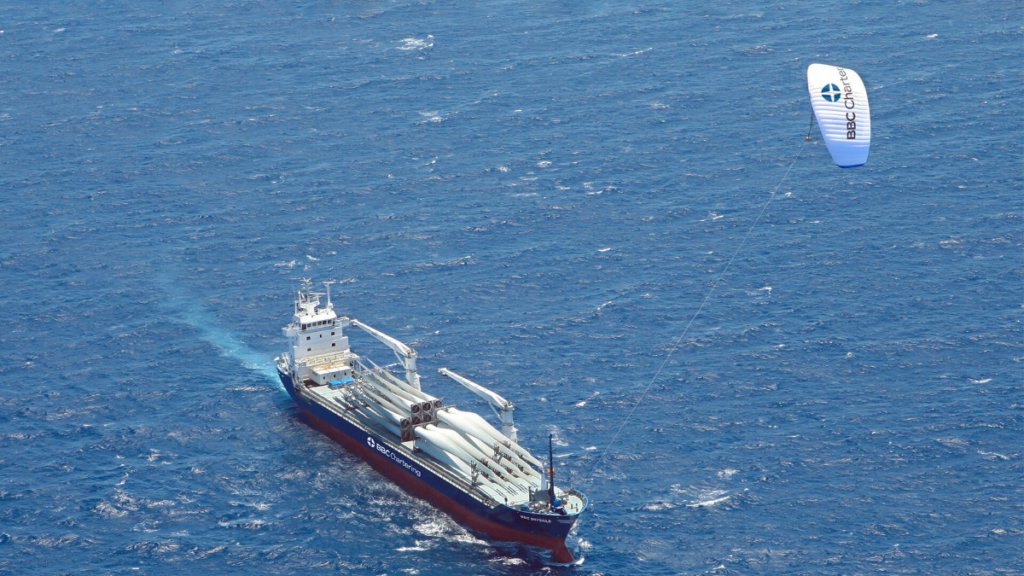
The first vessel on which the company's development was installed was the 132-meter MS Beluga SkySails container ship, equipped with a kite, with an area of 1700 square meters, operating at altitudes from 100 to 500 meters. The very first voyage, made along the route Germany - Venezuela - USA - Norway, confirmed the effectiveness of the kite-sail, which allowed saving about 10-15% of fuel daily, and in some cases even more (according to the company - up to 20%).
True, there is one serious drawback - a kite can not always be used. For example, going practically against the wind, as in the case of turbo sails, will not work here. But in general, the economic benefits of this project are obvious.
SkySails, inspired by its success, set itself the ambitious task of equipping hundreds of ships around the world with kites. And this process has really begun, but it is far from being as fast as the developers had hoped. The problem came from an unexpected side - shipowners who have to make investments usually do not pay for fuel, this is the responsibility of the charterer. The charterer, on the other hand, does not charter the ship for a long enough period to make it impossible to recoup such technologies.
In addition, fuel today is not very expensive, and greenhouse gas emissions from ships are not yet regulated by any legislation. But I would like to believe that this situation will change for the better in the very near future.
Looking to the future
What will they be, the sailboats of the future? Will existing technologies be used in their construction, or will many new and very interesting developments await us in the coming years? For now, we can only speculate and speculate.
But there is no need to even doubt that in the next few decades ships will ply the world's oceans everywhere, actively using the power of the wind and not afraid of regular energy crises. On most of them, the sails will be used as auxiliary propellers to save fuel. But there will also be real cargo sailboats, even if they are nothing like the galleons of bygone eras.

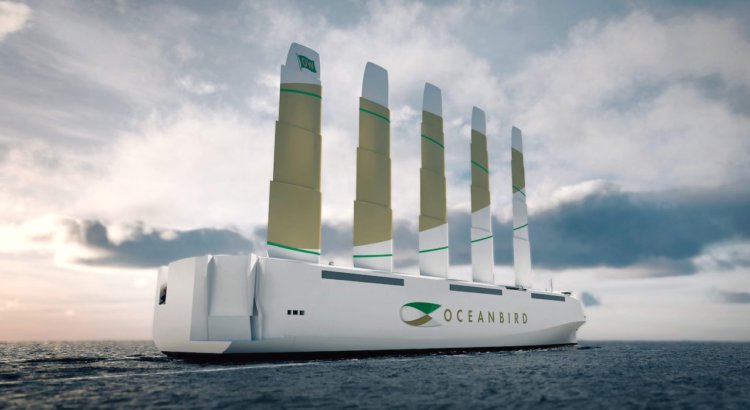
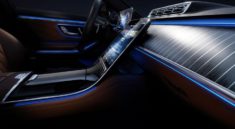
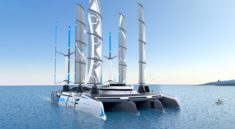

futuristic yacht "Archimedia": 1) trimaran with an extended middle hull. On the First and Third hulls there are Archimedean spiral sails that transmit torque to turbopump propellers (the same Archimedes spiral - sucks in water in front, pushes it out from behind) On the middle hull there is an “Eternity screw” (like an autogyro) in the shape of a figure eight, which allows you to do the opposite when falling from a high wave fly over it! In case of no wind, install a “pedalo” type galley with 4 pairs of torque. Install hydrofoils on the First and Third Hulls.